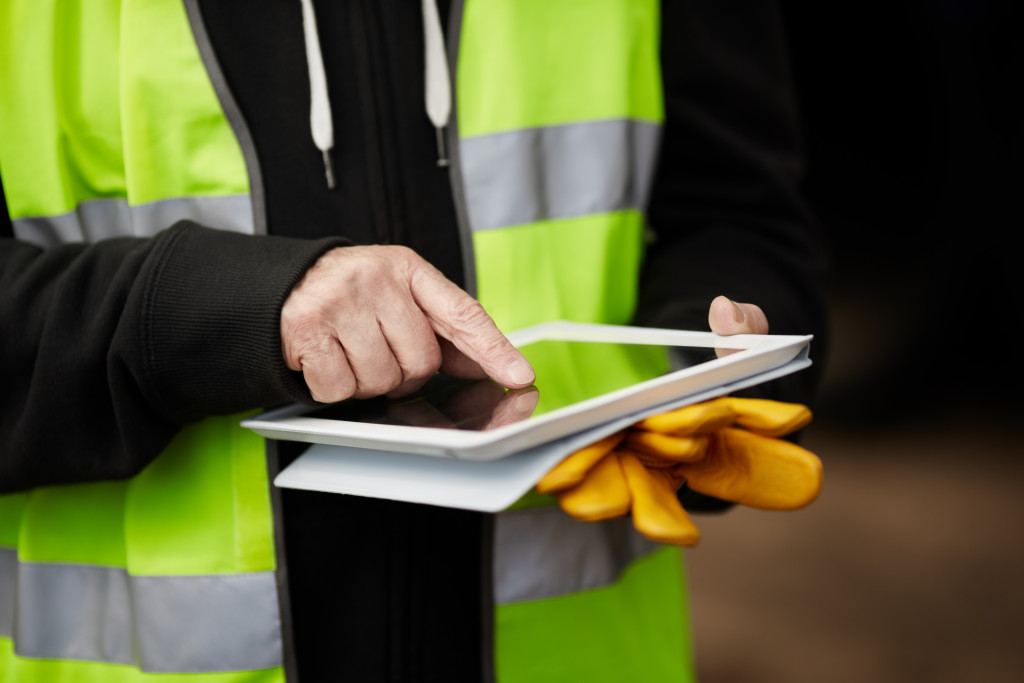Homebuilders and contractors always look for new ways to improve their construction processes and operations to provide higher-quality builds to clients. One broad concept used in modern home building is smart construction. In a nutshell, this involves using an optimized digital process for construction, from 3D monitoring, virtual reality, and computer-aided design (CAD).
Compared to the traditional architecture and building processes, construction companies can now get things done faster with minimal human error. Smart construction proves to be helpful in tackling sustainability concerns, outdated tactics, and inefficient design and building processes. Let’s go through the other fantastic contributions of smart construction to homebuilding.
1. Safer construction sites
One of the top advantages of technology in home building is improved safety. Builders use mobile devices and drones to monitor the construction site and become updated with both the progress and hazards on the project. Engineers and project leaders can also give instructions to their team in real-time, preventing delays and errors in home construction projects. Builders, particularly in larger real-estate constructions, also use wearable technology to reduce injuries and fatalities while working on site.
There are smart boots with features such as location sensing for improving lone worker safety, pressure detection for detecting small shocks and falls, and built-in charging. As eye safety, many construction workers also wear modern safety glasses with augmented reality features. This is beneficial for detecting hazardous materials, locating risky leading edges, and giving visual cues for safety protocols. Construction wearable technology is not only helpful for promoting worker safety but also boosting productivity and health.
2. Smarter design and construction
Architects and home builders consider building information modeling (BIM) as a powerful advantage for facilitating smarter builds. This innovation involves a modern design and construction process to create stunning and resilient houses and even non-domestic buildings. Among the many benefits of using BIM are resource savings, shorter project lifecycles, better communications, and more opportunities for modular architecture.
Another amazing technology used in design and construction processes is artificial intelligence (AI). This innovation is used for creating standardized designs through complex algorithms and big data. When utilized correctly, AI-based solutions can help develop a better construction execution plan. They can also effectively detect potential changes and delays in the home building process. AI uses the measurements and images recorded by drones and robots.
3. Faster project timelines
Residential building companies can now come up with faster timelines through prefabricated construction. While it seems like the mass-produced version of construction, this practice undeniably takes less time. It can boost the project completion time up to 50% compared to traditional construction. It allows simultaneous construction of multiple materials, reduces on-site weather factors, and eliminates subcontractor scheduling delays. With prefabricated housing, contractors can take on various projects at the same time.

Furthermore, prefabricated construction can create more predictable project timelines. Using factory-made components makes the projects more predictable without worrying about the weather or fluctuating material and travel costs. In a traditional construction process, unexpected events like bad weather and supply issues can lengthen the schedules and escalate the costs.
And compared to conventional building sites that encounter disruptions like waste, pollution, and noise, completing the building components in the factory minimizes these site irritants. Other benefits that prefabricated construction offers are eco-friendly opportunities, consistent manufacturing quality, financial savings, and a safer construction environment.
4. Reduced costs
Home construction management is now more possible with the use of technology. Construction companies have been using solutions like building information modeling, prefabricated housing, and aluminum formwork to cut their construction costs.
In terms of hardware technology, many construction companies invest in powerful industrial mini PCs. These computers are widely-known to be cost-effective to operate and are more affordable compared to other equipment. Companies that use mini computers for construction project processes and management benefit from less power consumption and reduced energy costs.
In addition to that, there are surveying and geolocation technologies that can improve cost-efficiency. For instance, IoT devices are utilized on bigger housing projects to monitor deliveries of building materials. This helps maintain a smooth-running fleet, allowing construction companies to boost productivity and bring down the costs in the long run. Other technologies for reducing construction costs are CAD tools, 3D printers, and augmented reality (AR).
The traditional construction process for residential properties often comes with more health and safety risks, particularly to the builders themselves. At the same time, achieving accuracy and details in architectural designs is more challenging. Fortunately, smart construction is here to transform the home building industry in a safer and more convenient manner.







